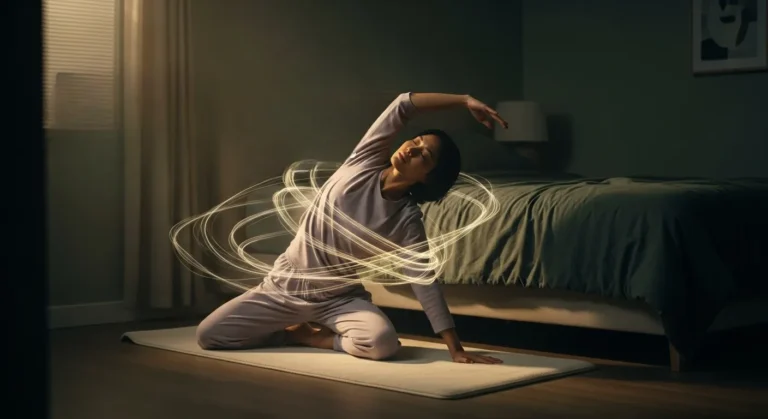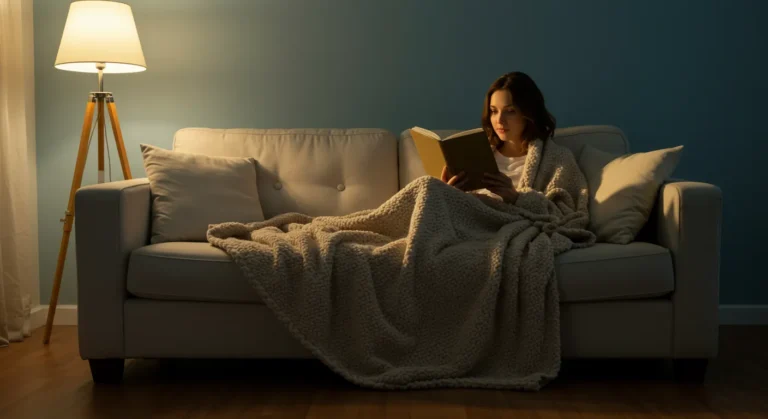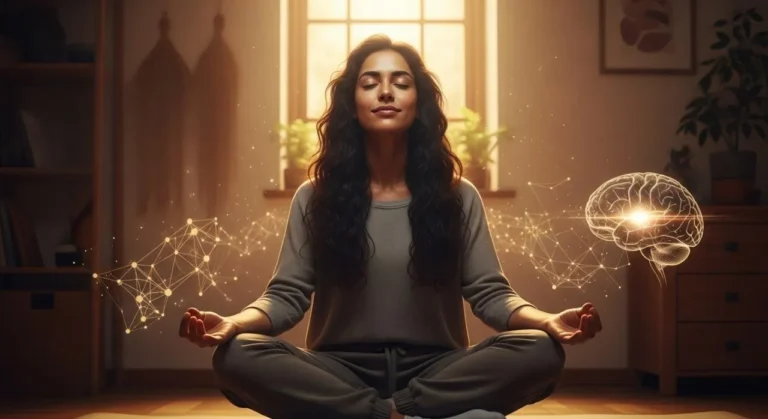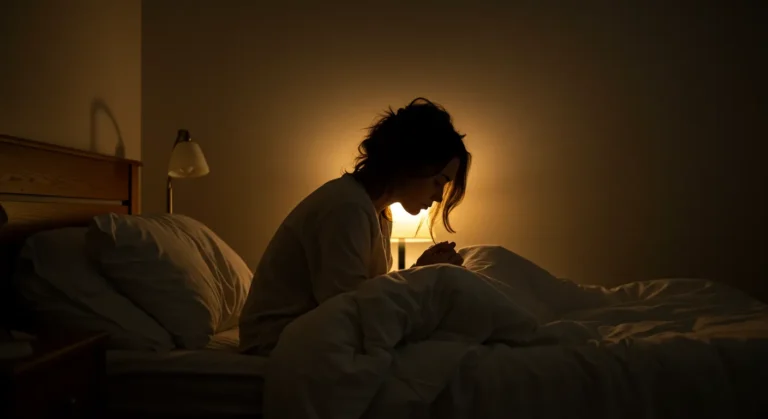7 Types of Rest You Need (But Probably Aren’t Getting)
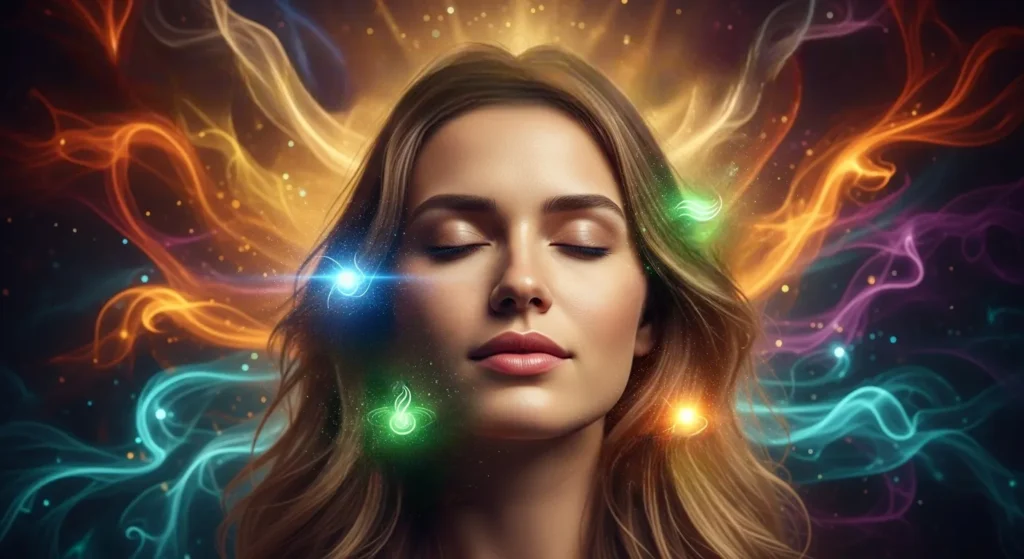
Picture this: You’ve just finished a relaxing weekend. You slept in, binge-watched your favorite series, and did absolutely nothing productive. So why do you still feel exhausted on Monday morning?
Here’s the thing we’ve learned after years of working with high-performers who felt constantly drained: sleep isn’t the only type of rest your body and mind need. In fact, there are seven distinct forms of rest, and most people are only getting one or two of them regularly.
This isn’t just wellness theory – it’s based on groundbreaking research by Dr. Saundra Dalton-Smith, who discovered that our modern understanding of rest is dangerously incomplete. When you understand the different types of rest and start addressing your specific “rest deficit,” the changes can be dramatic. We’re talking about waking up actually refreshed, having sustained energy throughout the day, and feeling mentally sharp instead of perpetually foggy.
Key Takeaways
✓ Seven distinct types of rest address different aspects of human exhaustion
✓ Physical rest isn’t just sleep – it includes both passive and active recovery
✓ Mental and emotional rest are critical for cognitive performance and wellbeing
✓ Sensory overload requires specific rest strategies in our hyper-connected world
✓ Social and spiritual rest impact your energy levels more than you might realize
✓ Creative rest is essential for innovation and problem-solving abilities
Why “Just Get More Sleep” Doesn’t Work
We’ve all been there. You’re exhausted, so you sleep for 9 hours, wake up, and still feel like you’ve been hit by a truck. That’s because exhaustion isn’t always about physical tiredness.
Your brain processes different types of stimulation and stress throughout the day. Visual input from screens, emotional labor from difficult conversations, mental effort from problem-solving, spiritual disconnection from your values – each creates its own form of depletion that requires a specific type of restoration.
Think of it like this: if you’ve been lifting weights all day, a mental puzzle won’t help your sore muscles recover. Similarly, if you’ve been in back-to-back meetings making difficult decisions, lying on the couch scrolling social media won’t restore your mental clarity.
The Hidden Cost of Rest Deficit
Research from the American Psychological Association shows that chronic rest deficit contributes to everything from decreased immune function to impaired decision-making. But here’s what really caught our attention: people who understand and practice multiple types of rest report 67% higher life satisfaction scores compared to those who only focus on sleep.
The different kinds of rest work synergistically. When you’re getting the right combination, you don’t just feel less tired – you feel genuinely energized and resilient.
The 7 Types of Rest That Change Everything
1. Physical Rest: Beyond Just Sleep
What it is: Restoration of your body’s energy and repair systems through both passive and active recovery.
Passive physical rest includes quality sleep, napping, and simply lying down. But here’s where most people stop, missing the crucial second component.
Active physical rest involves gentle movement that actually restores energy rather than depleting it. Think restorative yoga, leisurely walks, or gentle stretching. This type of movement improves circulation, releases muscle tension, and can leave you feeling more energized than when you started.
Signs you need it: Chronic fatigue, muscle tension, frequent illness, or feeling tired even after adequate sleep.
How to get it: Prioritize 7-9 hours of quality sleep, but also incorporate 10-15 minutes of gentle movement daily. Our clients love starting their day with simple stretches or ending it with a brief walk around the block.
2. Mental Rest: Giving Your Brain a Break
What it is: Relief from constant thinking, decision-making, and cognitive processing.
Your brain processes about 70,000 thoughts per day. Mental rest is about creating space between those thoughts and giving your cognitive systems time to reset and organize information.
Signs you need it: Brain fog, difficulty concentrating, feeling overwhelmed by simple decisions, or that “tip of the tongue” feeling when trying to recall information.
How to get it:
- Take 5-minute breaks every hour during work
- Practice mindfulness or meditation (even 2-3 minutes helps)
- Keep a “brain dump” notebook to externalize racing thoughts
- Engage in activities that require minimal cognitive effort, like gentle walking or listening to instrumental music
One technique we recommend is the “cognitive sunset” – setting a specific time each evening when you stop making decisions or processing complex information.
3. Sensory Rest: Escaping the Overwhelm
What it is: Relief from the constant barrage of visual, auditory, and tactile stimulation in our modern environment.
Between screens, notifications, traffic noise, and artificial lighting, your sensory system is in constant overdrive. Sensory rest is about creating calm, quiet environments that allow your nervous system to downregulate.
Signs you need it: Feeling irritable in crowded spaces, headaches from screen time, difficulty sleeping due to environmental stimulation, or feeling instantly relaxed when you’re in nature.
How to get it:
- Spend time in natural settings without devices
- Use dim lighting or candles in the evening
- Take regular breaks from screens (try the 20-20-20 rule)
- Create a quiet, clutter-free space in your home
- Consider using an eye mask or earplugs for deeper sensory rest
| Sensory Rest Strategy | Time Needed | Immediate Benefit |
| Eyes closed in quiet room | 5-10 minutes | Reduces visual fatigue |
| Nature walk without phone | 15-30 minutes | Calms nervous system |
| Dim lighting after sunset | 2-3 hours | Supports natural circadian rhythm |
| Digital sunset (no screens) | 1 hour before bed | Improves sleep quality |
4. Creative Rest: Rekindling Wonder and Innovation
What it is: Exposure to beauty and wonder that reawakens your sense of awe and inspiration.
Creative rest isn’t about being artistic – it’s about experiencing the kind of beauty and wonder that makes you feel small in the best way possible. It’s what happens when you watch a sunset and lose track of time, or when you’re so absorbed in natural beauty that your problems temporarily disappear.
Signs you need it: Feeling uninspired, difficulty problem-solving, lack of motivation, or feeling like everything looks the same and boring.
How to get it:
- Spend time in nature, especially places that feel vast (mountains, oceans, star-filled skies)
- Visit art galleries, museums, or attend live performances
- Listen to music that moves you emotionally
- Watch documentaries about subjects that fascinate you
- Engage with any form of beauty that makes you feel wonder
Creative rest is particularly crucial for anyone whose work requires innovation or problem-solving. It’s during these moments of wonder that your brain makes unexpected connections and generates new ideas.
5. Emotional Rest: Processing and Releasing
What it is: Space to feel and process emotions authentically without judgment or the need to “perform” emotionally for others.
Emotional rest is about being your authentic self without the exhausting effort of managing other people’s emotions or maintaining a particular emotional facade.
Signs you need it: Feeling emotionally numb, difficulty accessing your feelings, irritability over small things, or feeling like you’re always “on” for other people.
How to get it:
- Spend time with people who accept you completely as you are
- Practice journaling without editing or censoring yourself
- Allow yourself to feel emotions fully rather than pushing them away
- Set boundaries with emotionally draining people or situations
- Consider therapy or counseling as a form of emotional rest
One of our most effective recommendations is what we call “emotional honesty breaks” – scheduled time with trusted friends or family where you can express how you’re really feeling without trying to fix anything or be fixed.
6. Social Rest: The Right Kind of Connection
What it is: Time spent with people who energize rather than drain you, plus strategic solitude when needed.
Not all social interaction is created equal. Some people and situations give you energy, while others deplete it. Social rest is about being intentional with your social energy.
Signs you need it: Feeling drained after social interactions, avoiding plans you used to enjoy, feeling like you’re always giving more than you’re receiving in relationships.
How to get it:
- Prioritize time with people who make you feel energized and accepted
- Practice saying no to social obligations that consistently drain you
- Schedule regular alone time for introverts
- For extroverts, ensure you’re getting enough positive social interaction
- Consider the difference between being alone and being lonely
Social rest might mean a quiet dinner with your closest friend, or it might mean an entire weekend with no social plans. The key is knowing what fills your social battery versus what drains it.
7. Spiritual Rest: Connecting to Something Greater
What it is: Connection to something beyond yourself – whether that’s nature, community, purpose, or a higher power.
Spiritual rest isn’t necessarily religious (though it can be). It’s about feeling connected to something larger than your immediate concerns and daily stressors.
Signs you need it: Feeling like life lacks meaning, questioning your purpose, feeling disconnected from your values, or experiencing existential anxiety.
How to get it:
- Engage in practices that align with your values and beliefs
- Spend time in nature with a sense of connection rather than just recreation
- Volunteer for causes you care about
- Practice gratitude or meditation
- Engage in community activities that feel meaningful
- Reflect on your life’s purpose and meaning
Creating Your Personal Rest Strategy
Here’s what we’ve learned from working with hundreds of clients: the most successful people don’t try to implement all 7 forms of rest immediately. Instead, they start by identifying their biggest rest deficit.
The Rest Assessment Quiz
Take a moment to honestly evaluate yourself on a scale of 1-10 (10 being completely rested) in each area:
- Physical: Do you wake up feeling physically refreshed?
- Mental: Can you focus clearly throughout the day?
- Sensory: Do you feel calm in your environment?
- Creative: Do you feel inspired and motivated?
- Emotional: Can you be authentically yourself?
- Social: Do your relationships energize you?
- Spiritual: Do you feel connected to something meaningful?
Your lowest scores indicate where to start focusing your rest efforts.
The 30-Day Rest Challenge
Week 1: Focus on your lowest-scoring area. Implement one specific strategy daily. Week 2: Add strategies for your second-lowest area while maintaining week 1 practices. Week 3: Incorporate a third type of rest while maintaining the first two. Week 4: Fine-tune your approach based on what’s working best.
Advanced Rest Strategies for Busy Lives
Rest Stacking
Combine multiple types of rest simultaneously. For example:
- A nature walk (creative + physical + sensory rest)
- Meditation in a quiet, beautiful space (mental + sensory + spiritual rest)
- Quality time with loved ones in natural settings (social + creative + sensory rest)
Micro-Rest Practices
5-Minute Mental Rest: Close your eyes and focus on your breath 10-Minute Social Rest: Text someone who always makes you smile 15-Minute Creative Rest: Step outside and really notice your surroundings 20-Minute Physical Rest: Gentle stretching or a short walk
Rest Rituals
Build rest into your existing routines:
- Morning: 5 minutes of spiritual rest through gratitude practice
- Midday: 10 minutes of sensory rest with eyes closed
- Evening: 15 minutes of emotional rest through journaling
- Weekend: Extended creative and social rest activities
The Compound Effect of True Rest
When you start addressing all different types of rest, something remarkable happens. Your energy doesn’t just return – it multiplies. You become more resilient, creative, and emotionally stable. Problems that once felt overwhelming become manageable. Relationships improve. Work performance increases without working harder.
This isn’t about becoming lazy or unproductive. It’s about becoming sustainably high-performing by giving your various systems the specific types of recovery they need.
We’ve seen clients transform their entire lives by simply understanding that exhaustion has multiple causes and therefore requires multiple solutions. The executive who couldn’t focus despite 8 hours of sleep discovered she needed mental rest. The creative professional who felt uninspired found that spiritual rest rekindled her passion. The parent who felt emotionally depleted learned that social rest was the missing piece.
The goal isn’t perfection – it’s awareness. Start paying attention to which types of rest you’re getting and which you’re missing. Your body and mind are already telling you what they need; now you have the language to understand and respond.
Ready to dive deeper into optimizing your recovery? Check out our comprehensive guide on building the perfect sleep routine for advanced physical rest strategies. And if you’re curious about the science behind rest and recovery, our article on circadian rhythm optimization reveals how to align your natural energy cycles with your daily activities.
Remember: true rest isn’t a luxury – it’s a necessity for living your best life.
FAQ
Q: How long does it take to feel the benefits of practicing different types of rest? A: Most people notice improvements within 3-7 days of addressing their primary rest deficit. However, the compound benefits of practicing multiple types of rest typically become apparent after 2-3 weeks of consistent practice.
Q: Can you get too much of certain types of rest? A: While it’s rare, excessive passive physical rest (like sleeping 12+ hours regularly) or complete social isolation can become counterproductive. The key is balance and listening to your body’s actual needs rather than avoiding life responsibilities.
Q: Is it normal to need different types of rest at different times? A: Absolutely. Your rest needs change based on your current stressors, life phase, and daily activities. Someone in a demanding creative job might need more mental and creative rest, while someone dealing with relationship challenges might prioritize emotional and social rest.
Q: How do I know if I’m getting quality rest versus just “zombie time”? A: Quality rest leaves you feeling refreshed and energized, while “zombie time” (like mindless scrolling) often leaves you feeling more depleted. Pay attention to how you feel after different activities – true rest should restore rather than drain.
Q: Can these types of rest help with burnout? A: Yes, understanding and practicing multiple types of rest is one of the most effective approaches to both preventing and recovering from burnout. Burnout typically involves deficits in several rest areas simultaneously, so addressing only one (usually sleep) isn’t sufficient for full recovery.
Disclaimer: The information provided is for educational purposes only, not a substitute for professional medical advice. Always consult a healthcare professional.


